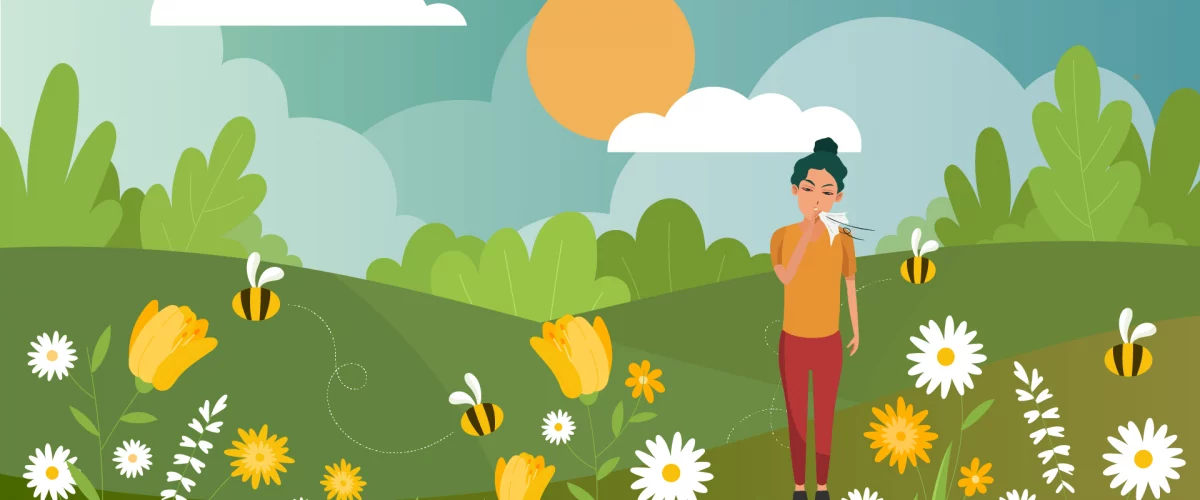Spring is here, bringing discomfort for some… Have you ever had itchy, red, dry eyes at this time of year? If so, you may have a seasonal allergy.
What are seasonal allergies?
Many allergens are present throughout the year. However, more people suffer from allergies in the spring, often due to pollen. Also known as hay fever or allergic rhinitis, this allergy is caused by pollen exposure, occurring in particular at the time pollen is produced. Pollen is found in grass, plants and trees.
The pollen season usually starts just before spring, but can last until October, depending on the source of the pollen. Tree pollen is produced from February to April. From May to July, it’s the turn of grasses or Poaceae (cereals such as wheat, barley and maize). Finally, the period from August to October sees the production of pollen from herbaceous plants.
Seasonal allergies cause various different symptoms, including:
- Frequent sneezing
- A blocked nose or, alternatively, a runny nose
- Dry, red eyes and excessive tearing
- Headaches
- Tingling and itching of the nose, eyes and throat
- Breathing problems
What is the link between allergies and dry eye?
As we have seen, seasonal allergies can make your eyes dry and irritated. Allergies may be mistaken for dry eye disease, because their symptoms are similar: red, watery eyes, burning sensation and irritation. However, itching is a symptom specific to seasonal allergies.
When someone already has dry eye disease, their condition can get worse in the spring. Seasonal allergies will make the symptoms of this condition worse. They can even have a debilitating impact on everyday life. Daily activities are therefore recommended to limit the impact of symptoms.
What should I do to limit the symptoms of allergies and dry eye?
- Each day, change your clothes as soon as you get home and rinse your hair, face and eyes to remove pollen that has settled on you during the day.
- Don’t dry your clothes outside and don’t go out with wet hair. Pollen attaches to things more easily when they are wet.
- Use an indoor air purifier to remove pollen and allergens present in the environment. Choose one with a HEPA (High Efficiency Particulate Air) filter, which can remove 99.97% of particles.
- When you are outside, protect your eyes. Opt for larger glasses to limit eye contact with pollen. You can also wear a wide-brimmed hat to protect your eyes from external factors such as pollen, wind, sun and smoke.
- Ventilate your home early in the morning and late in the evening for 15 minutes to refresh the air. Pollen is most present in the air in the late morning and in the afternoon. It is therefore advisable to avoid ventilating your home at these times.
- Hydrate your eyes with lubricants, otherwise known as artificial tears. These eye drops complement your natural tears to maintain good eye hydration and prevent certain symptoms.
- Avoid touching or rubbing your eyes. This will make the situation worse by putting your eyes in direct contact with allergens.
You will find more advice in our news item on “dry eye and preventive care”.
IF THE PROBLEM PERSISTS, SEE AN OPHTHALMOLOGIST.





